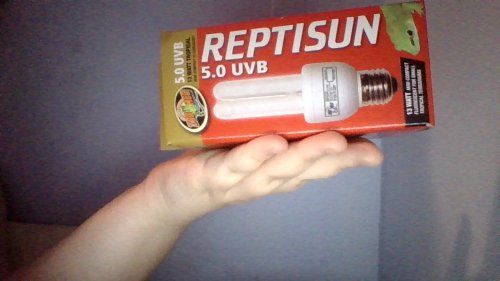masterpieceᕙ(◕ᴥ◕)ᕗ
New Member
i do have a uvb light that's what it read on the box. I'm not that retarded for the care of my reptiles that i wouldn't know the difference between a UVB and Basking bulb. I also have the same for her but since they don't need their night light (which it seems they like it because they position right under it and fall asleep but hey i was wrong before).Did you read the care sheets yet?
The lights you have for this chameleon are not adequate. You have no UVB lights, only a basking bulb (UVA) and a "night" light which he doesn't need. A drop in temperature is good for him.
What kind of lighting do you have for the female? She has a massive demand for calcium, much more than the male. She puts enough calcium into those eggs to last the growing babies for months.
Metabolic Bone Disease has many causes but the primary cause is nutritional combined with improper lighting. They need (phosporus-free) plain calcium in their diet. They use calcium for a lot of things, one being the functioning of muscles. They need Vitamin D3 to be able to use their dietary calcium. The best way to get D3 is from UVB either lighting or sunlight. UVB light is converted to D3 in the skin. They can also get D3 from their diet, but I wouldn't trust any reptile powder to contain what they say they do. There are no regulations or testing for human supplements.
There is a heavy demand for calcium during growth and producing eggs. If there is not enough calcium available from diet, the chameleon takes it from their bones. which is why they get weak and break or bend. Bones are not a static structure. Bone is constantly being replaced. This is a very complex problem. There is a link at the top of the Health Section written by a reptile vet which starts to explain MBD.



